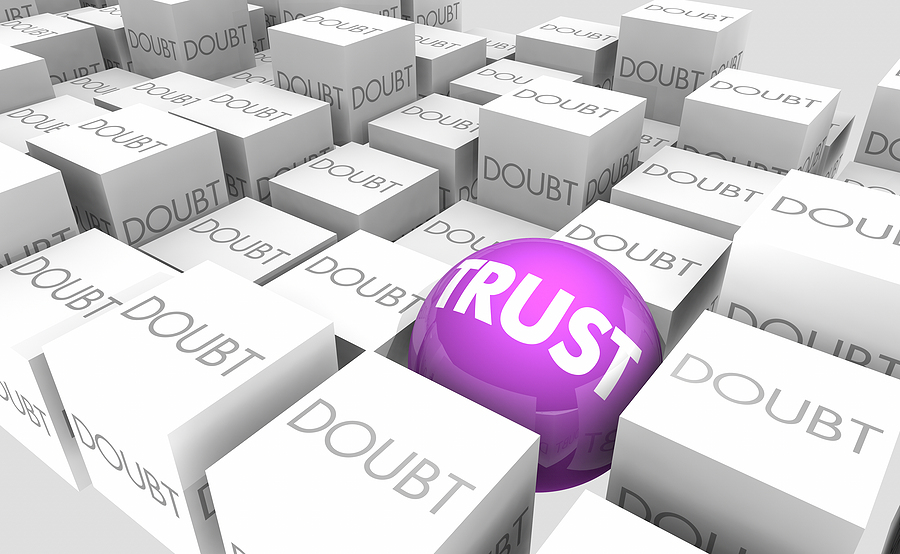
Advocacy: Serving Consumers’ Unrelenting Drive for Trust
May 22nd, 2024 Posted by Emergent brand strategy, consumer behavior, Consumer insight, Marketing Strategy, purchase funnel, purchase funnel, purchase funnel brand strategy, Strategic Planning 0 comments on “Advocacy: Serving Consumers’ Unrelenting Drive for Trust”People yearn for belief and assurance…
Is it any surprise the most powerful force influencing consumer choice is the desire to avoid making a bad decision? The threat of disappointment lurks in every corner on the path to purchase. So great is our need to elude the risk of unhappiness, we will stubbornly hang on to anything we believe to be true, while potentially missing the opportunities of new product or category exploration.
- Yet herein lies an enormous opportunity for brands to step into the midst of this condition with tools that work to resolve consumers’ express need for certainty in an uncertain world.
Yes, you can help people overcome their perceptions of risking a bad decision.
Yes, you can earn consumer trust and confidence.
Yes, you can solve this intractable barrier on the path to purchase.
Yes, you can create a real relationship with users that evolves into fandom.
Why are people so distrustful and risk averse?
In our hyper-digital media-saturated world, we have entered the era of glass brand houses where anything that can be known, will be known almost instantly. Thus, people are exposed to a revolving rogues’ gallery of living, real world case studies in deceit, manipulation, lies by omission, under-delivering, overt selfishness or failures to protect the integrity of promises made. Too many times we witness the extension of claims conveyed that either can’t or won’t be served and instead appear as a form of marketing spin or at the minimum, outright failures of honesty and integrity. People witness too many brand perp walks that fuel distrust, enable anxiety and cement our static cling to the tried and true.
The end result is a more cynical mental state that slathers on a deep coating of skepticism factored into risk assessments of literally everything we consume and do. Fearless people, those most likely to step into the abyss of uncertainty and take the risks of new product and service trial, represent a small proportion of any addressable market – roughly 14% on average. For a business to be successful, you simply must leap way beyond the fearless minority of early adopters.
Dawn of the age of advocacy
Every day, you have an opportunity to earn trust and belief. By the way trust is a prerequisite to secure a lasting, genuine brand-to-consumer relationship. Yet people are subjected to outcome claims and assertions by brands, mounted too often inside self-promotion of product features and benefits. Therefore, the brand’s commercial self-interests is the primary message and leaves the consumer to think the brand cannot be an objective, reliable guide.
You can step into the warmth of belief and trust by carefully examining all points of consumer interaction, while working to field flags and symbols of purpose, mission and beliefs that convey there’s a genuine heart and soul informing your brand’s business behavior and ethics.
Consumers want to believe they are always your top priority – that their happiness and wellbeing is paramount to your brand. When the business presents itself as customer-first, and actively operates in their best interests, then and only then have you opened the door to gaining trust.
Brand communication and action on the road to credibility
Having instilled customer centricity as an anchoring principle of brand ethos, advocacy is your most important strategy towards cultivating risk-abating comfort and confidence. What do consumers actually want from trusted brand communication?
Credibility – consider the mediums of trusted communication
Validation – invoking the imprimatur of respected sources
Verification – deploying believable voices
Advocacy can help you narrow the chasm between what brands proclaim and what consumers will accept as true.
The source of advocacy
There are outside voices we pay attention to and believe. …Those with unique knowledge and credentials that qualify them as respected experts. Especially people who elect to study and evaluate the merits of products and businesses and whose objectivity and reputations precede them. Thus, we grant these voices a mantel of independent assessment that we’ll accept.
Important to note, advocacy at its heart is about independent observation, and is not the province of paid influencers who have commercial biases attached to their endorsement.
Whom do we trust?
- Outside third-party subject matter experts, scientists and authorities
- “Medium is the message” – credible channels such as social community activation and earned media reporting
- Activating word of mouth – the most credible form of communication available
- Employees – the most overlooked cohort for advocacy support
Active and optimized brand social communities are recognized when the majority of content is supplied by community members who share their experiences, rather than the usual ample dosing of brand self-promotion content. We accept the evaluations and testimonials of IRL users before we will believe the brand’s claims of performance.
Advocacy in action
We represented the largest cheese company in the Italian sector at a time when adulteration, mislabeling and misrepresented products had been growing like a cancer in the category. We were tasked with working to help put an end to food fraud in Italian cheese. As our client was market share leader, we needed to bring the voices of the entire industry to bear in support of eradicating adulteration, otherwise the effort risked being seen as self-serving.
We met with industry and government organizations and leaders to advocate for change. Their presence was intended verify and validate the scope of the problem and reinforce why consumers deserved to know the cheese they were buying was genuine and made correctly according to the Federal standard of identity.
When we launched this effort in the media, these voices were essential to confirm the conditions impacting Italian cheese and the call to “out” the practice of making fake products in order to hit a lower price point. The project turned into a referendum on truth and best practices in cheese making. It would not have been successful without advocacy from all sectors of the business.
Advocacy in brand communication
We worked closely with the CEO of Jamba Juice Company on an enterprise level strategy to re-stage the business from a smoothie chain to a healthy lifestyle brand. This was happening at a time when consumers were increasingly scrutinizing Jamba beverages based on sugar content against the desired concept of healthier choice.
Thus began an initiative to address product formulation and new product innovation in an effort to reframe consumer perceptions of Jamba’s menu board and its role as part of a healthy lifestyle. To help confirm, verify, validate and educate consumers about these key initiatives we formed the Jamba Healthy Living Council, recruiting some of the most well-known and respected names in the world of registered dietitians and nutrition expertise.
We asked Council members to advise the company on healthier recipes while also verifying the efficacy of the changes Jamba was making to its existing products. Their voices were essential to helping the world see and believe that real changes were being made by America’s number one smoothie restaurant brand. It was the Council’s affirmation and validation of these developments that built credibility under the brand’s healthy lifestyle strategy.
- Brands are faced with risk-averse consumers who seek belief from the right sources when uncertainty is present. Which is everywhere by the way. Advocacy offers a path to reliable, credible truth that works to authentically confirm what we want people, retail customers, consumers, employees and other category players to believe.
Belief leads to trust while trust leads to acceptance and repeat purchase. If this sparks a conversation on your end about the potential role of advocacy strategies in your business, use the link below to start an informal conversation with an experienced team of advocacy strategy experts.
Looking for more food for thought? Subscribe to the Emerging Trends Report.
Bob Wheatley is the CEO of Chicago-based Emergent, The Healthy Living Agency. Traditional brand marketing often sidesteps more human qualities that can help consumers form an emotional bond. Yet brands yearn for authentic engagement, trust and a lasting relationship with their customers. Emergent helps brands erase ineffective self-promotion and replace it with clarity, honesty and deeper meaning in their customer relationships and communication. For more information, contact [email protected] and follow on Twitter @BobWheatley.





